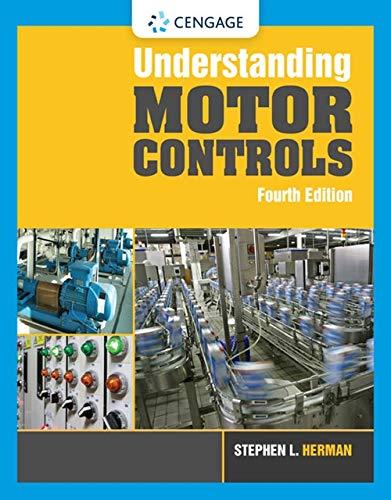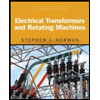COMPRESSOR PROPELLER COMBUSTION (a) TURBINE R(s) E(s) Y(s) G(s) H(s) (b) Question 4 (12 marks) Apply the gain formula to the signal flow graph (SGF) below to determine the expressions for the following transfer functions:and G₁ G₁ G₂ -H₂ G₁ H₁ Y₁ -H₁ End of Questions---- 3 Assessment 3 Question 1 (10 marks) [40 marks] (i) Without using the Routh-Hurwitz criterion, determine if M(s) asymptotically stable, marginally stable, or unstable. 100(S-1) (s+5)(s²+25+2) is (ii) Using the Routh-Hurwitz criterion, determine the stability of the closed-loop system that has the following characteristic equations. Determine the number of roots of each equation that are in the right-half s-plane and on the jw-axis. (a) s3 + 25s² + 250s + 10 = 0 (b) s +2s5 +8s + 15s3 + 20s² + 16s+16=0 Question 2 (8 marks) Reduce the block diagram in Figure below and find the transfer function 35 (3) (5) H₂ G₁ G₂ G3 Y H₁ H3 Question 3 (10 marks) The aircraft turboprop engine shown in Figure (a) is controlled by a closed-loop system with block diagram in Figure (b). The engine is modelled as a multivariable system with input vector E(s), which contains the fuel rate and propeller blade angle, and output vector Y(s), consisting of the engine speed and turbine-inlet temperature. The transfer function matrices are given as 2 10 2(s+2) G(s) = 5 1 H(S) = [] s+1- Find the closed-loop transfer function matrix [I+ G(s)H(s)]-¹G(s) (10)
COMPRESSOR PROPELLER COMBUSTION (a) TURBINE R(s) E(s) Y(s) G(s) H(s) (b) Question 4 (12 marks) Apply the gain formula to the signal flow graph (SGF) below to determine the expressions for the following transfer functions:and G₁ G₁ G₂ -H₂ G₁ H₁ Y₁ -H₁ End of Questions---- 3 Assessment 3 Question 1 (10 marks) [40 marks] (i) Without using the Routh-Hurwitz criterion, determine if M(s) asymptotically stable, marginally stable, or unstable. 100(S-1) (s+5)(s²+25+2) is (ii) Using the Routh-Hurwitz criterion, determine the stability of the closed-loop system that has the following characteristic equations. Determine the number of roots of each equation that are in the right-half s-plane and on the jw-axis. (a) s3 + 25s² + 250s + 10 = 0 (b) s +2s5 +8s + 15s3 + 20s² + 16s+16=0 Question 2 (8 marks) Reduce the block diagram in Figure below and find the transfer function 35 (3) (5) H₂ G₁ G₂ G3 Y H₁ H3 Question 3 (10 marks) The aircraft turboprop engine shown in Figure (a) is controlled by a closed-loop system with block diagram in Figure (b). The engine is modelled as a multivariable system with input vector E(s), which contains the fuel rate and propeller blade angle, and output vector Y(s), consisting of the engine speed and turbine-inlet temperature. The transfer function matrices are given as 2 10 2(s+2) G(s) = 5 1 H(S) = [] s+1- Find the closed-loop transfer function matrix [I+ G(s)H(s)]-¹G(s) (10)
Principles of Heat Transfer (Activate Learning with these NEW titles from Engineering!)
8th Edition
ISBN:9781305387102
Author:Kreith, Frank; Manglik, Raj M.
Publisher:Kreith, Frank; Manglik, Raj M.
Chapter4: Numerical Analysis Of Heat Conduction
Section: Chapter Questions
Problem 4.6P
Question
100%

Transcribed Image Text:COMPRESSOR
PROPELLER
COMBUSTION
(a)
TURBINE
R(s)
E(s)
Y(s)
G(s)
H(s)
(b)
Question 4 (12 marks)
Apply the gain formula to the signal flow graph (SGF) below to determine the expressions
for the following transfer functions:and
G₁
G₁
G₂
-H₂
G₁
H₁
Y₁
-H₁
End of Questions----
3
![Assessment 3
Question 1 (10 marks)
[40 marks]
(i) Without using the Routh-Hurwitz criterion, determine if M(s)
asymptotically stable, marginally stable, or unstable.
100(S-1)
(s+5)(s²+25+2)
is
(ii) Using the Routh-Hurwitz criterion, determine the stability of the closed-loop system that
has the following characteristic equations. Determine the number of roots of each equation
that are in the right-half s-plane and on the jw-axis.
(a) s3 + 25s² + 250s + 10 = 0
(b) s +2s5 +8s + 15s3 + 20s² + 16s+16=0
Question 2 (8 marks)
Reduce the block diagram in Figure below and find the transfer function
35
(3)
(5)
H₂
G₁
G₂
G3
Y
H₁
H3
Question 3 (10 marks)
The aircraft turboprop engine shown in Figure (a) is controlled by a closed-loop system with
block diagram in Figure (b). The engine is modelled as a multivariable system with input vector
E(s), which contains the fuel rate and propeller blade angle, and output vector Y(s), consisting
of the engine speed and turbine-inlet temperature. The transfer function matrices are given as
2
10
2(s+2)
G(s) =
5
1
H(S) = []
s+1-
Find the closed-loop transfer function matrix [I+ G(s)H(s)]-¹G(s)
(10)](/v2/_next/image?url=https%3A%2F%2Fcontent.bartleby.com%2Fqna-images%2Fquestion%2Fe3d5343c-ed2c-40fe-b097-184567684479%2F60771b73-9182-473e-934b-b97931b3715d%2Fzlzv1wo_processed.jpeg&w=3840&q=75)
Transcribed Image Text:Assessment 3
Question 1 (10 marks)
[40 marks]
(i) Without using the Routh-Hurwitz criterion, determine if M(s)
asymptotically stable, marginally stable, or unstable.
100(S-1)
(s+5)(s²+25+2)
is
(ii) Using the Routh-Hurwitz criterion, determine the stability of the closed-loop system that
has the following characteristic equations. Determine the number of roots of each equation
that are in the right-half s-plane and on the jw-axis.
(a) s3 + 25s² + 250s + 10 = 0
(b) s +2s5 +8s + 15s3 + 20s² + 16s+16=0
Question 2 (8 marks)
Reduce the block diagram in Figure below and find the transfer function
35
(3)
(5)
H₂
G₁
G₂
G3
Y
H₁
H3
Question 3 (10 marks)
The aircraft turboprop engine shown in Figure (a) is controlled by a closed-loop system with
block diagram in Figure (b). The engine is modelled as a multivariable system with input vector
E(s), which contains the fuel rate and propeller blade angle, and output vector Y(s), consisting
of the engine speed and turbine-inlet temperature. The transfer function matrices are given as
2
10
2(s+2)
G(s) =
5
1
H(S) = []
s+1-
Find the closed-loop transfer function matrix [I+ G(s)H(s)]-¹G(s)
(10)
Expert Solution
This question has been solved!
Explore an expertly crafted, step-by-step solution for a thorough understanding of key concepts.
Step by step
Solved in 2 steps with 10 images

Recommended textbooks for you

Principles of Heat Transfer (Activate Learning wi…
Mechanical Engineering
ISBN:
9781305387102
Author:
Kreith, Frank; Manglik, Raj M.
Publisher:
Cengage Learning

Understanding Motor Controls
Mechanical Engineering
ISBN:
9781337798686
Author:
Stephen L. Herman
Publisher:
Delmar Cengage Learning

Automotive Technology: A Systems Approach (MindTa…
Mechanical Engineering
ISBN:
9781133612315
Author:
Jack Erjavec, Rob Thompson
Publisher:
Cengage Learning

Principles of Heat Transfer (Activate Learning wi…
Mechanical Engineering
ISBN:
9781305387102
Author:
Kreith, Frank; Manglik, Raj M.
Publisher:
Cengage Learning

Understanding Motor Controls
Mechanical Engineering
ISBN:
9781337798686
Author:
Stephen L. Herman
Publisher:
Delmar Cengage Learning

Automotive Technology: A Systems Approach (MindTa…
Mechanical Engineering
ISBN:
9781133612315
Author:
Jack Erjavec, Rob Thompson
Publisher:
Cengage Learning

Electrical Transformers and Rotating Machines
Mechanical Engineering
ISBN:
9781305494817
Author:
Stephen L. Herman
Publisher:
Cengage Learning

Refrigeration and Air Conditioning Technology (Mi…
Mechanical Engineering
ISBN:
9781305578296
Author:
John Tomczyk, Eugene Silberstein, Bill Whitman, Bill Johnson
Publisher:
Cengage Learning

Precision Machining Technology (MindTap Course Li…
Mechanical Engineering
ISBN:
9781285444543
Author:
Peter J. Hoffman, Eric S. Hopewell, Brian Janes
Publisher:
Cengage Learning